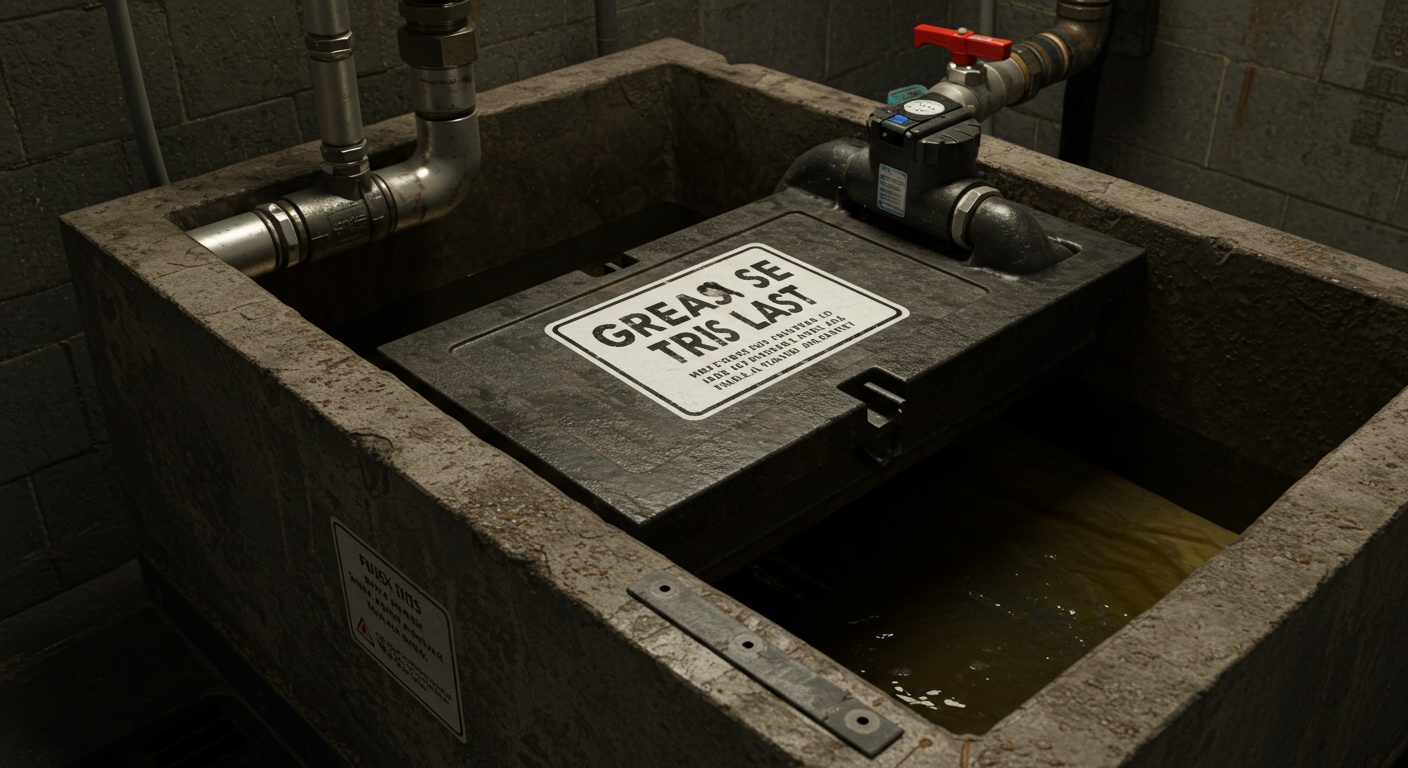Commercial kitchens rely on grease traps to prevent fats, oils, and grease (FOG) from entering sewer systems. But like all equipment, grease traps don’t last forever. Knowing when to replace a grease trap—and choosing the right plumbing partner—can save you from costly backups, fines, and operational downtime.
In this guide, WM Plumbing shares expert insights on:
✔ Signs your grease trap needs replacement (not just cleaning)
✔ How often grease traps typically need upgrading
✔ Choosing the right replacement system
✔ Why professional installation matters
How Long Do Grease Traps Last? Understanding Lifespans
Before discussing replacement, it’s important to know the life expectancy of a grease trap:
| Type | Average Lifespan |
| Stainless Steel | 15–25 years |
| Plastic (Polyethylene) | 10–15 years |
| Concrete | 7–12 years |
Key factors affecting longevity:
- Maintenance frequency (poor care cuts lifespan in half)
- Volume of FOG (high-use kitchens wear out traps faster)
- Local regulations (some areas mandate replacements after 10 years)
5 Signs It’s Time for a Grease Trap Replacement
1. Chronic Clogs & Slow Drainage
- If your drains back up frequently even after cleaning, the trap may be failing.
- Old, undersized systems struggle with modern kitchen demands.
2. Visible Damage or Leaks
- Rust/cracks in metal traps
- Broken seals causing leaks
- Foul odors that persist after pumping
3. Failed Inspections
- Many jurisdictions require upgrades if traps don’t meet current codes.
- WM Plumbing helps ensure compliance with local regulations.
4. Kitchen Expansion or Increased Volume
- More cooking = more FOG. An undersized trap will clog constantly.
5. Age (Most Traps Last 10–20 Years Max)
- Even well-maintained traps wear out eventually.
- If yours is over 15 years old, replacement is likely more cost-effective than repairs.
How Often Should You Replace a Grease Trap?
While proper maintenance extends lifespan, most grease traps need replacement:
- Every 10–15 years for plastic/concrete
- Every 20–25 years for stainless steel
WM Plumbing Tip: Schedule annual inspections to catch problems early.
Choosing the Right Replacement Grease Trap
1. Material Matters
- Stainless steel = Most durable (best for busy kitchens)
- Plastic = Lightweight & corrosion-resistant (mid-range use)
- Concrete = For large outdoor systems (but degrades faster)
2. Proper Sizing Is Critical
- Too small? Constant clogs.
- Too big? Wasted water, odor issues.
- WM Plumbing calculates the ideal size based on your kitchen’s flow rate.
3. Automatic vs. Manual Traps
- Manual traps require frequent cleaning.
- Automatic systems self-regulate but cost more upfront.
4. Compliance with Local Laws
- Some cities ban certain materials or require specific designs.
- We ensure your new system meets all regulations.
Why Professional Installation Matters
Attempting a DIY grease trap replacement risks:
❌ Improper sizing → Constant clogs
❌ Failed inspections → Fines & shutdowns
❌ Leaks/sewer backups → Costly emergency repairs
How WM Plumbing Ensures a Smooth Upgrade
- Inspect your current system (identify why it failed)
- Recommend the right replacement (size, material, type)
- Handle permits & compliance (so you don’t have to)
- Professional installation (done right the first time)
- Maintenance plans (to extend your new trap’s life)
3 Costly Mistakes to Avoid When Replacing a Grease Trap
1. Choosing the Cheapest Option
- Low-quality traps fail faster, costing more long-term.
2. Ignoring Local Codes
- Non-compliant installations lead to fines or forced replacements.
3. Skipping Staff Training
- Even the best trap fails if staff pour grease down drains.
WM Plumbing’s Grease Trap Replacement Services
When it’s time to upgrade, we provide:
✅ Free consultations to assess your needs
✅ Top-quality stainless steel & polyethylene traps
✅ Full compliance with health department regulations
✅ Expert installation & post-install support
Final Thoughts
Replacing a grease trap isn’t optional—it’s a necessary investment to keep your kitchen running smoothly and avoid regulatory trouble. Key takeaways:
✔ Most traps last 10–20 years (stainless steel lasts longest)
✔ Replace at first signs of failure (clogs, leaks, odors)
✔ Always hire professionals for sizing and installation
Need a new grease trap? Contact WM Plumbing today for:
- Expert recommendations
- Stress-free installation
- Ongoing maintenance plans
Don’t wait for a disaster—upgrade your grease trap with confidence!
